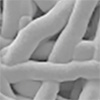A recipe for zero-emissions fuel: Soda cans, seawater, and caffeine
 Engineers have developed a fast and sustainable method for producing hydrogen fuel using aluminum, saltwater, and coffee grounds.
Engineers have developed a fast and sustainable method for producing hydrogen fuel using aluminum, saltwater, and coffee grounds.
Jul 25th, 2024
Read more
 Subscribe to our Cleantech News feed
Subscribe to our Cleantech News feed
 Engineers have developed a fast and sustainable method for producing hydrogen fuel using aluminum, saltwater, and coffee grounds.
Engineers have developed a fast and sustainable method for producing hydrogen fuel using aluminum, saltwater, and coffee grounds.
Jul 25th, 2024
Read more The discovery has the potential to reduce electronic waste and develop new applications for luminescent polymers.
The discovery has the potential to reduce electronic waste and develop new applications for luminescent polymers.
Jul 22nd, 2024
Read more A new study shows how waste Styrofoam can be transformed into polymers for electronics.
A new study shows how waste Styrofoam can be transformed into polymers for electronics.
Jul 21st, 2024
Read more Chemists have been working to synthesize high-value materials from waste molecules for years. Now, an international collaboration of scientists is exploring ways to use electricity to streamline the process.
Chemists have been working to synthesize high-value materials from waste molecules for years. Now, an international collaboration of scientists is exploring ways to use electricity to streamline the process.
Jul 19th, 2024
Read more Scientists develop innovative process for the bioleaching of copper, indium and zinc.
Scientists develop innovative process for the bioleaching of copper, indium and zinc.
Jul 10th, 2024
Read more A new catalyst design harnesses so far unexplored properties of water to achieve, for the first time, an alternative to critical raw materials for water electrolysis at industrial-relevant conditions.
A new catalyst design harnesses so far unexplored properties of water to achieve, for the first time, an alternative to critical raw materials for water electrolysis at industrial-relevant conditions.
Jun 20th, 2024
Read more Artificial intelligence is poised to bring photovoltaic systems into a new era through revolutionary improvements in efficiency, reliability, and predictability of solar power generation.
Artificial intelligence is poised to bring photovoltaic systems into a new era through revolutionary improvements in efficiency, reliability, and predictability of solar power generation.
Jun 12th, 2024
Read more Urgent action is needed to design greener drugs that maintain efficacy while minimising environmental impact, according to an international study.
Urgent action is needed to design greener drugs that maintain efficacy while minimising environmental impact, according to an international study.
Jun 5th, 2024
Read more Researchers discovered how algae produce hydrogen, a green energy source, through a unique catalytic center. They identified the enzyme HydF's role in assembling the hydrogen cluster.
Researchers discovered how algae produce hydrogen, a green energy source, through a unique catalytic center. They identified the enzyme HydF's role in assembling the hydrogen cluster.
Jun 3rd, 2024
Read more Researchers discovered that combining ionic liquids electrolytes with metal hydroxides enables efficient electrochemical conversion of CO2 to hydrocarbons.
Researchers discovered that combining ionic liquids electrolytes with metal hydroxides enables efficient electrochemical conversion of CO2 to hydrocarbons.
Jun 3rd, 2024
Read more New method produces hydrogen gas from water using solar power and agricultural waste. This technique cuts energy use by 600%, boosting sustainable chemical production.
New method produces hydrogen gas from water using solar power and agricultural waste. This technique cuts energy use by 600%, boosting sustainable chemical production.
May 30th, 2024
Read more Microstructural models help to discover and investigate new electrode materials.
Microstructural models help to discover and investigate new electrode materials.
May 23rd, 2024
Read more The Venus flower basket sponge's glass-like skeleton withstands deep-sea conditions and filters feeds using ambient currents. This discovery could inspire efficient engineering designs.
The Venus flower basket sponge's glass-like skeleton withstands deep-sea conditions and filters feeds using ambient currents. This discovery could inspire efficient engineering designs.
May 20th, 2024
Read more In a novel study, researchers have made significant strides in understanding the behaviour of micro- and nanobubbles on electrodes during water electrolysis. This process is crucial for (green) hydrogen production.
In a novel study, researchers have made significant strides in understanding the behaviour of micro- and nanobubbles on electrodes during water electrolysis. This process is crucial for (green) hydrogen production.
May 16th, 2024
Read more Researchers have developed advanced dielectric composites that address critical challenges in medium and high voltage power grid components, offering efficient field management and reduced energy loss.
Researchers have developed advanced dielectric composites that address critical challenges in medium and high voltage power grid components, offering efficient field management and reduced energy loss.
May 14th, 2024
Read more Scientists have for the first time precisely characterised the enzyme styrene oxide isomerase, which can be used to produce valuable chemicals and drug precursors in an environmentally friendly manner.
Scientists have for the first time precisely characterised the enzyme styrene oxide isomerase, which can be used to produce valuable chemicals and drug precursors in an environmentally friendly manner.
May 14th, 2024
Read more Scientists report a new method that reduces the amount of iridium needed for the reaction by 95%, without altering the rate of hydrogen production. This breakthrough could revolutionize our ability to produce ecologically friendly hydrogen.
Scientists report a new method that reduces the amount of iridium needed for the reaction by 95%, without altering the rate of hydrogen production. This breakthrough could revolutionize our ability to produce ecologically friendly hydrogen.
May 10th, 2024
Read more Discarded lithium-ion cells from electric cars could be re-used as stationary power storage units. Researchers have established the first indicators for a reliable assessment of their condition.
Discarded lithium-ion cells from electric cars could be re-used as stationary power storage units. Researchers have established the first indicators for a reliable assessment of their condition.
May 7th, 2024
Read more